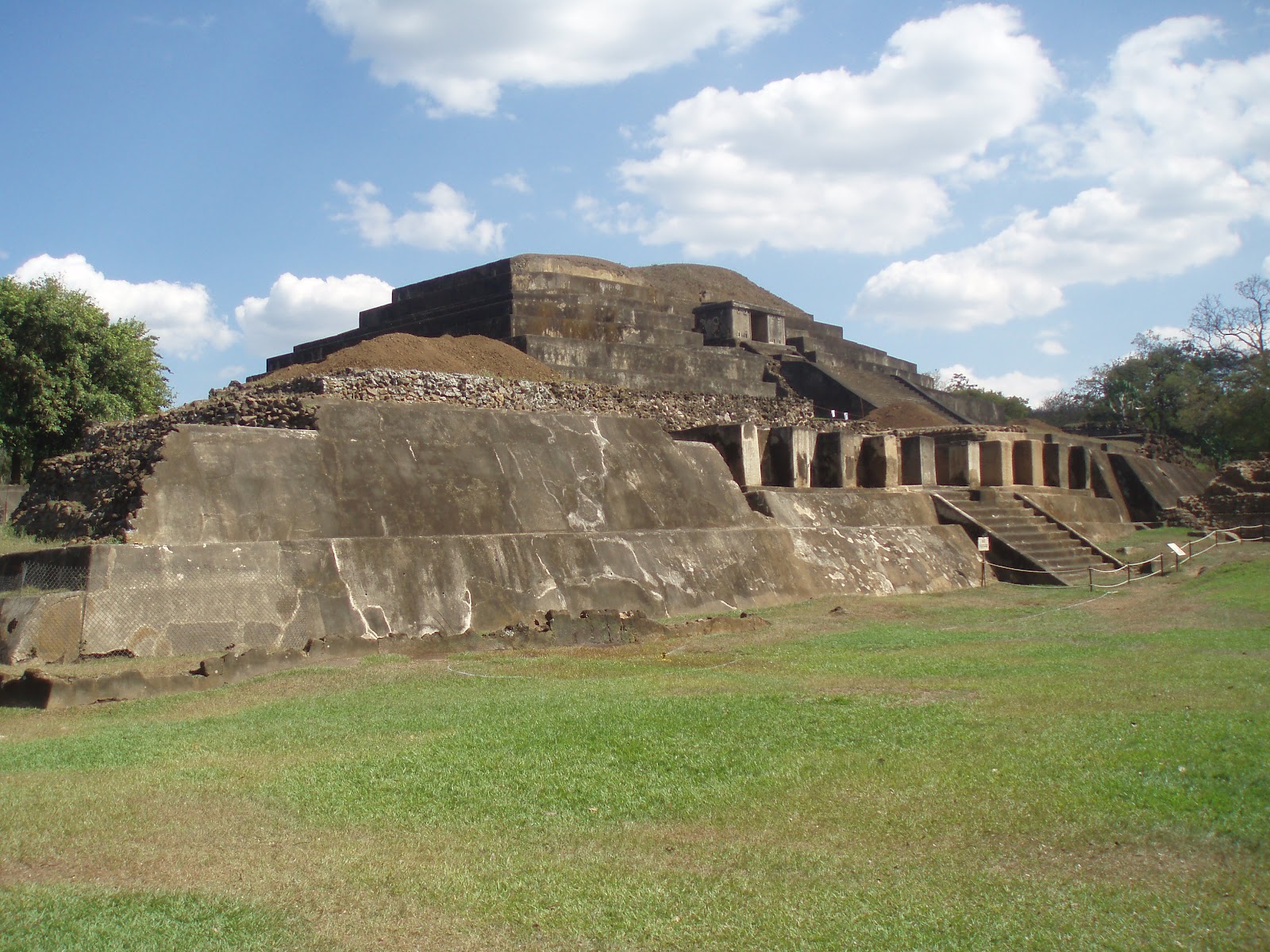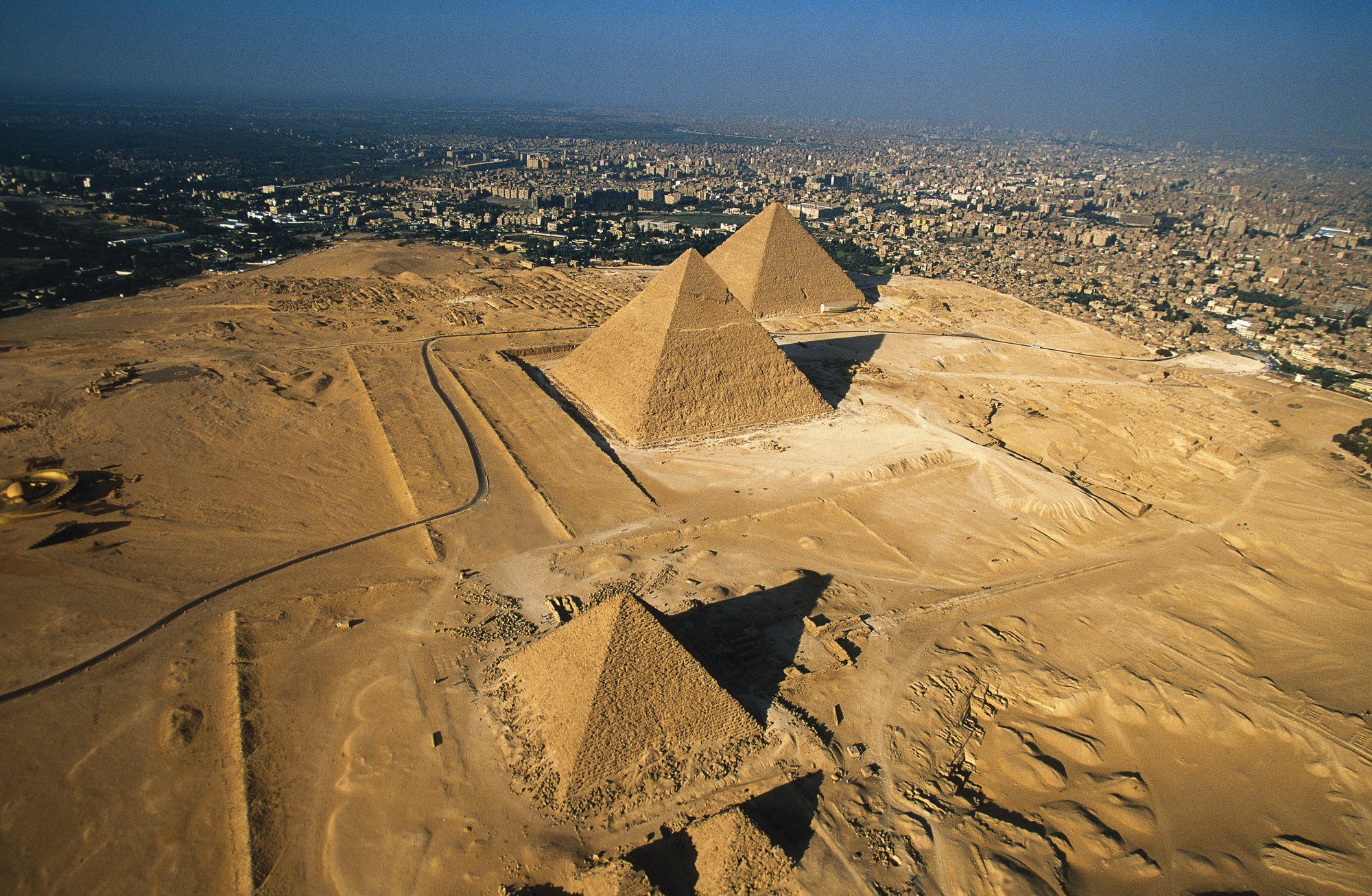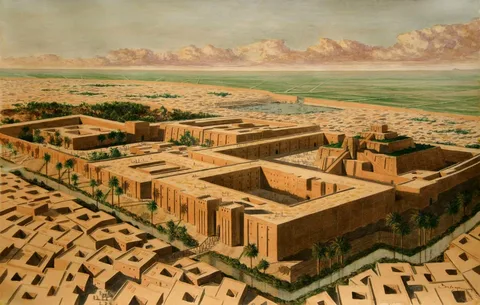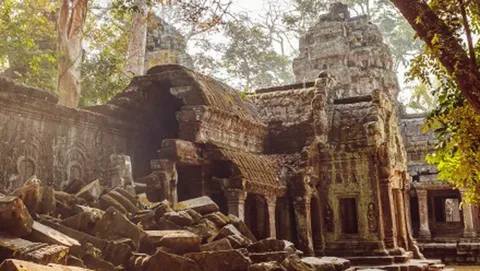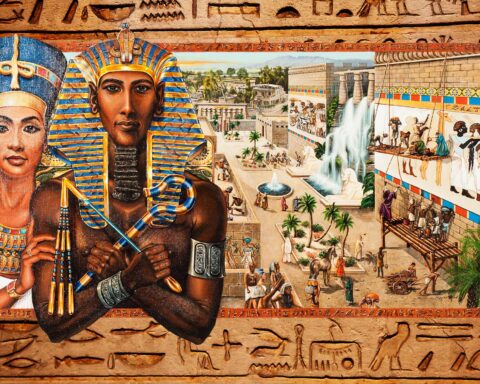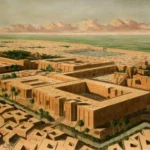Mysterious Origins
Unsettled Questions Surrounding Ancient Architecture
The mysteries surrounding ancient architecture continue to captivate the imagination of people around the world, with many structures remaining shrouded in mystery. Some of these enigmatic buildings defy explanation, and their origins remain a topic of debate among scholars and experts.
One such structure is the Pyramids of Giza in Egypt, which are believed by most to have been built by the ancient Egyptians. However, some researchers argue that the pyramids’ construction techniques and precision suggest involvement from a more advanced civilization, possibly even extraterrestrial beings.
Another structure that has sparked intense debate is the Nazca Lines in Peru, which depict various animals and geometric shapes etched into the desert floor. The purpose of these geoglyphs remains unknown, with some speculating that they were used for ceremonial purposes or as a form of communication between ancient civilizations.
The Moai statues on Easter Island are another example of mysterious ancient architecture. These towering monoliths weigh up to 86 tons and were created by the early Rapa Nui people around the 13th century. Despite extensive research, the exact meaning behind these statues remains unclear, with theories ranging from their use as ancestral figures to their potential function as a form of astronomical observation.
The following are some examples of unsettled questions surrounding ancient architecture:
The Construction Methods
Many ancient structures exhibit advanced engineering skills and precision that defy explanation using the technology available at the time of their construction. The use of sophisticated tools, such as pulleys and levers, has been found in some structures, while other buildings show evidence of more exotic techniques, sparking questions about who might have possessed these skills.
The Purpose Behind Structures
The true function of many ancient buildings is unknown or disputed among scholars. Some structures appear to be used for ceremonial purposes, while others seem to serve practical functions such as storage or agricultural use.
The Scale and Scope of Projects
Ancient civilizations often undertook massive building projects that required significant resources and labor forces. The scale and scope of these projects raise questions about how they were planned and executed, especially considering the lack of written records and available technology at the time.
The Role of Advanced Civilizations
Some researchers propose the involvement of advanced or even extraterrestrial civilizations in the construction of certain ancient structures. While these ideas are intriguing, they remain speculative and require further evidence to support them.
Preservation and Conservation Challenges
The preservation of ancient structures often poses significant challenges due to environmental factors such as erosion, earthquakes, or human activities like deforestation or pollution. Ensuring the long-term conservation of these sites requires careful planning, funding, and international cooperation.
The lack of documentation and oral tradition surrounding the construction of ancient structures has left archaeologists and historians stumped.
The mystery of who built some of the world’s most fascinating ancient structures continues to be a topic of debate among historians and archaeologists. The lack of documentation and oral tradition surrounding their construction has left many questions unanswered, with some experts even suggesting that it may be impossible to ever uncover the truth.
The problem lies in the fact that many of these ancient structures, such as the Pyramids of Giza or the Great Wall of China, were built thousands of years ago by civilizations that left behind little to no written records. The only remaining evidence is often fragmented and open to interpretation, leaving historians and archaeologists to piece together a narrative based on limited information.
This lack of documentation has led some to suggest that we may never know who exactly built these structures or what their original purpose was. While there have been numerous theories and speculations over the years, many of these remain unsubstantiated and are often disputed by other experts in the field.
One example is the construction of Stonehenge, which has sparked intense debate among archaeologists about its origins and builders. The monument’s complex structure and alignment with celestial bodies have led some to propose that it was built by a group of skilled astronomers or even an advanced civilization from another era.
Similarly, the discovery of ancient structures in South America has raised questions about the capabilities and sophistication of pre-Columbian civilizations. The construction of massive megalithic complexes such as Machu Picchu and Angkor Wat have challenged conventional wisdom about the technical expertise of these societies.
Despite ongoing research and excavations, much remains to be discovered about the people who built these structures and their cultures. The absence of written records has created a significant gap in our understanding of human history, highlighting the importance of continued exploration, excavation, and preservation efforts.
Notable Examples
The Pyramids of Giza
The Pyramids of Giza are one of the most mysterious and fascinating ancient structures in the world, located on the outskirts of modern-day Cairo. With their towering grandeur and perfectly aligned stones, they have captivated the imagination of people for centuries. However, despite their significance, the question of who built these incredible pyramids remains a topic of debate among historians and archaeologists.
The Pyramids were constructed in several stages, with the Great Pyramid of Khufu being the largest and most impressive of the three main pyramids. This pyramid is believed to have taken around 20 years to build and required an enormous workforce, possibly as many as 100,000 laborers. However, despite this massive scale, there is still no concrete evidence to confirm who specifically was responsible for constructing these magnificent structures.
Some historians believe that the Pyramids were built by the ancient Egyptians under the reign of Pharaoh Khufu, while others argue that it was actually constructed during a later period. The lack of written records and archaeological findings has only added to the mystery surrounding these enigmatic structures.
The Great Pyramid of Khufu is estimated to have been around 146.5 meters (480 feet) tall when first built, making it one of the tallest man-made structures in the world for over four millennia. Its base covers an area of approximately 13 acres and its original smooth exterior was made up of highly polished white limestone, which gave the pyramid a dazzling appearance under sunlight.
The construction process of these pyramids is still shrouded in mystery. The ancient Egyptians developed advanced techniques and tools for quarrying and transporting massive stone blocks into place, but the exact methods used to raise the structures remain unknown. Despite various theories and speculations, many questions about their construction process continue to baffle experts and enthusiasts alike.
Some of the notable features associated with these pyramids include their precise mathematical calculations, evident in the alignment of the stars and constellations on their northern faces. The Great Pyramid’s base is a near-perfect square with its angles carefully aligned with the four cardinal directions (north, south, east, and west). This level of precision suggests that the builders had a deep understanding of astronomy, mathematics, and engineering.
The mystery surrounding the Pyramids has captivated people for centuries. While various theories have been proposed to explain their construction and purpose, many questions remain unanswered. The discovery of new evidence or artifacts could potentially shed light on this enigma, but until then, these ancient structures will continue to inspire awe and curiosity.
The following list highlights some of the notable points surrounding the Pyramids of Giza:
- Estimated construction time: 20 years
- Number of laborers involved: possibly as many as 100,000
- Height of the Great Pyramid: approximately 146.5 meters (480 feet)
- Base area of the Great Pyramid: around 13 acres
- Original smooth exterior material: highly polished white limestone
- Alignment with the four cardinal directions: near-perfect square base
- Possible alignment with the stars and constellations: precise mathematical calculations
In summary, despite their significance and grandeur, the Pyramids of Giza remain shrouded in mystery. The question of who built these incredible structures remains a topic of debate among historians and archaeologists. While various theories have been proposed to explain their construction and purpose, many questions still need to be answered. Further research and discoveries may potentially shed light on this enigma, but for now, the Pyramids continue to inspire awe and curiosity.
One of the most recognizable ancient monuments, the pyramids of Giza have been a subject of fascination for centuries. Their precise construction and purpose remain unclear.
The pyramids of Giza are one of the most impressive architectural achievements in history, and their mystique has endured for millennia. Standing tall on the outskirts of modern-day Cairo, these towering structures have captivated the imagination of people around the world.
The largest of the three pyramids, known as the Great Pyramid of Khufu, is an awe-inspiring sight to behold. Its original height of 146 meters (480 feet) made it the tallest man-made structure in the world for over 3,900 years, until the completion of the Lincoln Cathedral in England in 1311.
Despite its colossal size, the Great Pyramid’s precise construction remains a mystery. The ancient Egyptians’ ability to transport and place around 2.3 million stone blocks into position with such precision is still not fully understood. The pyramid’s base is a near-perfect square, with each side aligning almost perfectly with the four cardinal directions (north, south, east, and west).
The purpose of these massive structures has also been subject to speculation for centuries. The most widely accepted theory is that they served as tombs for the pharaohs who ruled ancient Egypt. However, some researchers believe that the pyramids may have been built for a more practical or even spiritual purpose.
One of the most intriguing aspects of the pyramids is their alignment with celestial bodies. The pyramids’ architects seemed to have had an intimate understanding of astronomy and mathematics, as evidenced by their precise alignments with the stars and constellations. For example, the Great Pyramid’s base is aligned almost perfectly with true north, while its four sides are aligned with the four cardinal directions.
The pyramids also exhibit a strange phenomenon known as the “Pyramidion,” where the apex of each pyramid forms a perfect triangle with the horizon at sunrise or sunset. This alignment has been observed to be identical on different dates and latitudes, leading some researchers to believe that it may have had spiritual or symbolic significance for the ancient Egyptians.
Despite extensive research and excavation efforts, many questions surrounding the pyramids remain unanswered. Who built these ancient structures? What was their purpose? And how did they achieve such remarkable precision and engineering prowess in construction? The answers, much like the secrets of the pyramids themselves, remain shrouded in mystery.
The allure of the pyramids continues to captivate us today, inspiring countless theories, speculations, and adventures. As we gaze upon these majestic structures, we are reminded of our shared human curiosity and fascination with the mysteries of the past.
Unconventional Theories
Advanced Knowledge and Lost Civilizations
The existence of advanced knowledge and lost civilizations has fascinated people for centuries. The discovery of ancient structures that defy explanation has led many to wonder who could have built these monuments, given the level of sophistication and technology required.
One of the most famous examples is the Giza Pyramid in Egypt. Built around 2580 BC, this pyramid is an astonishing feat of engineering, with its base covering over 13 acres and its original height being around 481 feet tall. The construction of the pyramid is believed to have taken several decades to complete and required a huge workforce.
However, despite extensive research, it remains unclear who exactly built the Giza Pyramid or how they managed to construct such an enormous structure using only primitive tools and technology available at the time.
The same mystery surrounds other ancient structures like Machu Picchu in Peru. Built in the 15th century by the Incas, this ‘Lost City’ is perched on top of a mountain ridge over 7,000 feet above sea level and was abandoned before the arrival of the Spanish conquistadors.
Despite its impressive architecture, with well-preserved stone buildings and intricate stonework, very little is known about the people who built Machu Picchu or their advanced knowledge in engineering and construction.
The same phenomenon can be observed in the ancient city of Petra in Jordan. Built by the Nabateans around 6th century BC, this vast archaeological site features intricately carved sandstone structures that have been remarkably well-preserved despite being built over two millennia ago.
Despite extensive research and excavations, very little is known about who exactly built these structures or what inspired them to create such advanced architectural feats without any apparent knowledge of modern engineering techniques.
The mystery surrounding the lost civilizations is often attributed to the fact that most ancient cultures left behind only fragmented records, which do not provide clear answers to who they were and how they achieved their impressive accomplishments. Some researchers believe that these civilizations might have been influenced by advanced knowledge from a forgotten civilization or an extraterrestrial source.
However, while such theories are intriguing, the lack of concrete evidence makes them speculative and unverifiable. The truth is that we may never know for certain who built these ancient structures or what advanced knowledge they possessed, but their enduring legacy continues to inspire us today.
Some researchers propose that advanced knowledge was possessed by ancient civilizations, which has since been lost to the sands of time. This theory sparks debate among experts.
The idea that advanced knowledge was possessed by ancient civilizations is a fascinating concept that has captured the imagination of many people. Some researchers propose that these ancient cultures had access to knowledge and technologies that were beyond their contemporaries, and that this knowledge has since been lost over time.
This theory suggests that these ancient civilizations made significant advances in various fields such as architecture, engineering, mathematics, and astronomy, which enabled them to build structures and create artifacts that are still marvels of engineering today. Theories point to the construction of monumental buildings like the Pyramids of Giza, the Great Pyramid of Cholula, and the Temple of Angkor Wat, among others.
Many experts believe that these ancient civilizations were able to achieve such impressive feats due to their access to advanced knowledge and technologies that have since been lost. For example, some researchers propose that the ancient Egyptians used advanced understanding of mathematics and engineering to construct the Great Pyramid, which has withstood the test of time for over 4,500 years.
On the other hand, many experts are skeptical about this theory and argue that it is based on incomplete or inaccurate information. They point out that many of the theories and ideas presented by researchers are based on incomplete or fragmentary evidence, and that they lack a clear understanding of the historical context in which these structures were built.
Furthermore, some experts argue that the idea that advanced knowledge was possessed by ancient civilizations is often used to support pseudoscientific claims or to promote conspiracy theories. They argue that such ideas can be misleading and that they may distract from our understanding of the actual achievements of these ancient cultures.
The debate surrounding this theory highlights the ongoing discussion among experts about the nature of knowledge, the role of history, and the significance of cultural heritage. It also underscores the importance of rigorous research, careful analysis, and nuanced interpretation in understanding the complex issues surrounding ancient civilizations.
Cultural Significance
The Impact on Modern Culture
The construction of ancient structures has been a topic of interest for centuries, with many wondering who could have built such massive and intricate monuments. The impact of these structures on modern culture is profound, yet often overlooked.
One of the most famous examples of an ancient structure that sparks curiosity is Machu Picchu, the “Lost City” of Peru. This Inca citadel is believed to have been built by the Incas in the 15th century, but its origins and purpose are still shrouded in mystery.
Another example is the Giza Pyramids in Egypt, one of the Seven Wonders of the Ancient World. These pyramids were built around 2580 BC, but the identity of the pharaoh who commissioned their construction remains unknown.
The construction of these ancient structures has had a significant impact on modern culture in several ways:
- Architectural Inspiration: The designs and building techniques used by the ancient civilizations have inspired architects throughout history, influencing the development of modern architecture. Many buildings today are designed with nods to ancient styles and materials.
- Cultural Significance: Ancient structures often serve as cultural icons, representing a nation’s or civilization’s identity and values. For example, the Parthenon in Greece is not only an architectural masterpiece but also a symbol of Greek culture and history.
- Historical Preservation: The preservation of ancient structures has become a major concern, with many governments and organizations working to conserve these monuments for future generations. This includes initiatives like UNESCO’s World Heritage program.
- Tourism: Ancient structures attract millions of tourists each year, generating significant revenue for local economies and supporting the growth of sustainable tourism practices.
In conclusion, while we may never know who built these ancient structures, their impact on modern culture is undeniable. They continue to inspire awe, spark curiosity, and shape our understanding of human history and achievement.
The mysterious origins of these structures have captured the imagination of artists, writers, and filmmakers, influencing modern culture in profound ways.
The mysterious origins of the ancient structures have captivated the imaginations of people worldwide, transcending geographical boundaries to influence modern culture in profound and far-reaching ways.
From the majestic pyramids of Egypt to the sprawling city-states of Mesopotamia, and from the intricate temples of Southeast Asia to the colossal monuments of South America, these structures have been a source of endless fascination for generations of artists, writers, and filmmakers.
The allure of these enigmatic ruins lies in their sheer scale, precision engineering, and often, seemingly inexplicable construction methods that defy understanding even today. The fact that they were built by cultures long since vanished, leaving behind only whispers of their existence, adds to the mystique surrounding these structures.
Artists have been inspired by the intricate carvings, ornate details, and majestic architecture of these ancient edifices, incorporating elements into their work in a way that reflects the cultural and historical context in which they were created.
Writers, on the other hand, have drawn upon the mysterious allure of these structures to craft narratives that often blur the lines between fact and fiction, leaving readers to ponder the secrets hidden within the stones themselves.
Filmmakers, too, have found inspiration in these ancient wonders, using their imposing presence and mystique as backdrops for tales both fantastical and grounded in reality.
The impact of these structures on modern culture is not limited to artistic expression alone. Their study has also led to a deeper understanding of the civilizations that built them, shedding light on long-lost technologies, customs, and ways of life that might otherwise have remained shrouded in mystery.
Moreover, their legacy extends beyond the realm of scholarship, influencing our collective imagination and shaping our perceptions of history, architecture, and human potential. The awe-inspiring grandeur of these structures continues to evoke a sense of wonder, encouraging us to reflect on the transience of human achievement and the enduring power of creative expression.
Scientific Investigations
Using Technology to Reveal Clues
The enigmatic nature of ancient structures has long fascinated archaeologists, historians, and the general public alike. Many of these structures have been attributed to various civilizations, but often the identity of their creators remains shrouded in mystery. Recent advancements in technology have revolutionized the field of archaeology, providing new tools for uncovering clues that shed light on the origins of these ancient wonders.
3D Scanning and Modeling
One such technological innovation is 3D scanning and modeling, which allows researchers to create highly accurate digital replicas of ancient structures. This technique enables the visualization of intricate details and textures that would be impossible to capture through traditional methods. By analyzing these digital models, scientists can identify subtle patterns and anomalies that may reveal clues about the builders’ skills and techniques.
Geophysical Surveying
Another powerful tool in the arsenal of archaeologists is geophysical surveying, which involves using electromagnetic sensors to map subsurface features. This non-invasive technique can detect buried structures or artifacts that lie hidden beneath the earth’s surface. By combining geophysical data with 3D scanning and modeling, researchers can reconstruct the spatial relationships between different architectural elements and better understand how they fit into the larger structural framework.
Drone Photography
Unmanned aerial vehicles (UAVs), also known as drones, have become increasingly essential in archaeological research. Equipped with high-resolution cameras, these small aircraft can capture detailed photographs of large areas from multiple angles and altitudes. By combining the resulting images into a single orthophoto mosaic, researchers can identify subtle changes in terrain or surface features that may be indicative of buried structures or artifacts.
Statistical Analysis
In addition to these technological advancements, statistical analysis has also become a valuable tool for uncovering hidden patterns and relationships within the data generated by these technologies. By applying machine learning algorithms or other statistical techniques, researchers can identify subtle correlations between different variables that may reveal clues about the builders’ intentions or skills.
Integrating Multiple Technologies
The key to unlocking the secrets of ancient structures lies not in any single technological innovation, but rather in integrating multiple approaches to create a comprehensive understanding of these enigmatic monuments. By combining 3D scanning and modeling, geophysical surveying, drone photography, and statistical analysis, researchers can gain new insights into the construction techniques, architectural styles, and cultural practices of ancient civilizations.
Future Directions
As technology continues to evolve, we can expect even more sophisticated tools for uncovering clues about the builders of ancient structures. For example, advances in artificial intelligence may enable researchers to analyze vast amounts of data generated by these technologies and identify patterns or relationships that would be impossible for human analysts to detect. Moreover, as our understanding of these ancient civilizations grows, so too will our appreciation for their cultural achievements and the technological innovations that made them possible.
Scientists employ advanced technologies, such as groundpenetrating radar and 3D scanning, to uncover hidden information about these ancient structures.
The mysterious ancient structures scattered across the globe have long fascinated archaeologists and historians, sparking intense curiosity about their origins, purposes, and builders.
Despite extensive research and excavations, much remains unknown about these enigmatic sites, leaving many to ponder the identities of their creators and the reasons behind their construction.
Theories abound, ranging from ancient civilizations to extraterrestrial beings, but concrete evidence is often scarce, fueling debate and speculation among scholars and enthusiasts alike.
However, advances in technology have significantly improved our ability to uncover hidden information about these ancient structures, shedding new light on their secrets and sparking renewed interest in their study.
One such technology is ground-penetrating radar (GPR), a non-invasive method that uses radio waves to image subsurface features with high resolution, allowing researchers to detect buried objects and structures without excavating them.
GPR has been employed at numerous ancient sites worldwide, revealing previously unknown underground chambers, tunnels, and artifacts hidden beneath the earth’s surface.
Another valuable tool is 3D scanning, which utilizes laser technology to create detailed, three-dimensional models of structures from various angles and perspectives, facilitating precise measurements, analyses, and reconstructions.
At sites like Angkor Wat in Cambodia or Machu Picchu in Peru, for instance, 3D scanning has enabled archaeologists to study intricate stone carvings, examine hidden passages, and even virtually “excavate” areas inaccessible in reality, all without causing damage to the sites themselves.
While these technologies have significantly expanded our understanding of ancient structures and their builders, much remains to be discovered, and ongoing research continues to unravel the secrets surrounding these enigmatic edifices.
- Countries That Start With The Letter F - September 2, 2024
- Biggest Cities In Vietnam - September 1, 2024
- 10 Largest Cities In Kansas - September 1, 2024

